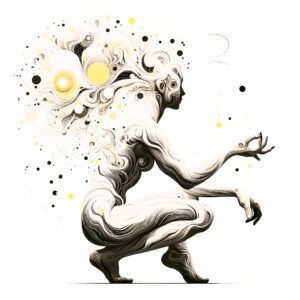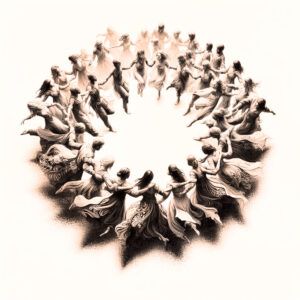
CONCEPT:
Somatic Movement
Pronunciation:
\sō-ˈma-tik ˈmüv-mənt\
Definition:
Somatic movement refers to a broad spectrum of practices emphasizing internal physical perception and experience over external form or aesthetics. It involves attentiveness to bodily sensations, feelings, and internal processes during movement, fostering a deeper mind-body connection.
Other Concepts
Deeper Understanding
In the modern tapestry of wellness and therapy, somatic movement stands as a profound practice, weaving together the threads of body awareness, physical health, and emotional well-being. The term “somatic” originates from the Greek word “soma,” meaning “body,” and in this context, it signifies an approach that prioritizes the internal experience of the body over its outward appearance.
Somatic movement is fundamentally about listening to the body. Unlike traditional exercise regimes that focus on achieving specific external goals—like muscle tone or cardiovascular endurance—somatic practices delve into the sensations and internal experiences of movement. This attentiveness can lead to a more profound understanding and respect for one’s body, enhancing the mind-body connection.
Historically, somatic movement draws from diverse traditions such as yoga, martial arts, and dance. However, it was in the early 20th century that pioneers like Moshe Feldenkrais, F. Matthias Alexander, and Martha Graham began developing distinct somatic methodologies. The Feldenkrais Method, Alexander Technique, and Graham’s approach to dance are all somatic practices that have significantly influenced contemporary movement therapies.
Moshe Feldenkrais, an Israeli engineer and physicist, created the Feldenkrais Method based on the idea that increasing an individual’s awareness of their movements could improve their physical and mental functioning. F. Matthias Alexander developed the Alexander Technique, which emphasizes the proper alignment of the head, neck, and spine to alleviate pain and improve movement efficiency. Martha Graham, a revolutionary American dancer and choreographer, incorporated somatic principles into her technique, focusing on the expressive and emotive power of movement.
Scientific research has increasingly supported the benefits of somatic movement. Studies have shown that somatic practices can significantly improve body awareness, reduce chronic pain, alleviate stress and anxiety, and enhance emotional regulation. For instance, research by Mehling et al. (2005) demonstrated the construct validity of the Body Awareness Questionnaire in a population with chronic low back pain, underscoring the effectiveness of somatic approaches in improving body awareness and reducing pain perception.
Somatic movement practices are often utilized in therapeutic settings, dance education, and personal growth contexts. Therapists and educators employ these techniques to help individuals cultivate body awareness, improve posture and alignment, release chronic tension, and enhance overall well-being. By focusing on the internal experience of movement, somatic practices encourage a more intuitive and responsive relationship with the body.
The relevance of somatic movement extends beyond physical health. It plays a crucial role in trauma healing, as it allows individuals to safely explore and release stored emotions and tensions. When individuals lose touch with their true essence, they may shift from a centered state to one dominated by reactive, often detrimental, behaviors. Somatic movement offers a pathway back to this essence, promoting a balanced, authentic self.
In summary, somatic movement is a vital practice for those seeking to deepen their understanding of the body and its signals. By fostering a harmonious mind-body connection, somatic practices not only enhance physical health but also contribute to emotional and psychological well-being, offering a holistic approach to personal growth and healing.
References
Mehling, W. E., Acree, M., Stewart, A., Silas, J., & Jones, A. (2005). “Body awareness: construct validity of the Body Awareness Questionnaire in a US population with chronic low back pain.” BMC Musculoskeletal Disorders, vol. 6, no. 1, pp. 67-74.
Feldenkrais, Moshe. Awareness Through Movement: Easy-to-Do Health Exercises to Improve Your Posture, Vision, Imagination, and Personal Awareness. HarperOne, 1990.
Alexander, F. Matthias. The Use of the Self: Its Conscious Direction in Relation to Diagnosis, Functioning, and the Control of Reaction. Integral Press, 1984.
Graham, Martha. Blood Memory: An Autobiography. Doubleday, 1991.

